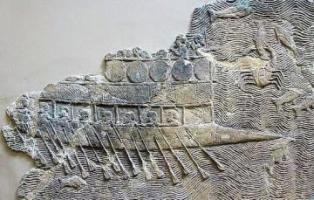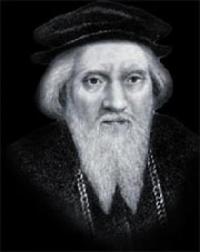Copy Link
Add to Bookmark
Report
AIList Digest Volume 3 Issue 174

AIList Digest Wednesday, 20 Nov 1985 Volume 3 : Issue 174
Today's Topics:
Queries - PEARL & Man/Machine IQ Tests & Smalltalk,
AI Tools - Object-Oriented Programming,
Science Fiction - Machines Who Talk,
Survey - Classic AI Books,
AI Tools - Xerox 1186
----------------------------------------------------------------------
Date: 20 NOV 85 12:09-N
From: SCHNEIDER%CGEUGE51.BITNET@WISCVM.ARPA
Subject: Information about PEARL
Does anybody know, whether the PEARL project at Berkeley is still alive
and whom I could contact if I have questions ?
(I couldn't reach anybody of the persons mentioned in the Pearl manual
distributed with the UNIX Franz Lisp.)
I also would be glad to get some comments on that language or pointers
to systems that have been built with it.
SNAILMAIL: Daniel Schneider
Departement de science politique
Universite de Geneve
1211 GENEVE 4 (=GENEVA)
Switzerland
BITNET: SCHNEIDER@CGEUGE51
>From ARPANET: SCHNEIDER%CGEUGE51.BITNET@WISCVM
Usenet: mcvax!cernvax!cui!shneider (shneider without "c")
------------------------------
Date: Mon, 18 Nov 85 14:38:58 PST
From: Laursen.pa@Xerox.ARPA
Subject: Re: IQ test for AI. (AIList Digest V3 #164)
Coming at this from another angle, has anyone considered building an AI
system that boosts a human being's performance on IQ tests? Can a
person/computer combination confirm that 'Two heads are better than
one?" A baseline for comparison would have to allow the non-AI assisted
person access to a calculator and an on-line dictionary while taking an
IQ test. How much leverage beyond that could an 'intelligent' system
give?
------------------------------
Date: nov 20 1985
From: astropa%ipacuc.bitnet@WISCVM.ARPA
Subject: smalltalk
I would like to know if anyone can help me to reach the people who
originally implemented Smalltalk-80 at Xerox on the networks. They
are Adele Goldberg, David Robson, Daniel Ingalls. I also would like to
know if there is somebody out there interested in Smalltalk, and if
someone knows about public-domain implementations of Smalltalk.
Please send private replies to me.
Fabio Favata
Net address: ASTROPA@IPACUC.BITNET
Use the Wisconsin ARPA-BITNET gateway to reach Bitnet.
------------------------------
Date: 18 Nov 85 15:44 PST
From: Bobrow.pa@Xerox.ARPA
Subject: Object-Oriented Programming in Lisp
From: Nick Davies (at GEC Research) <YE85%mrca.co.uk@ucl-cs.arpa>
Subject: Object oriented programming in Common Lisp
> Does anyone have or know of an implementation of Flavors
> or any other object-oriented programming system in Common Lisp ?
CommonLoops is an object oriented language that is written in Common
Lisp. It is being proposed by Xerox as a standard for object-oriented
programming for that language.
CommonLoops merges the facilities of object oriented programming and
Lisp. It has a unique combination of properties. These include a
uniform syntax for function calling and sending messages; a merger of
the type space of Lisp and the class hierarchy of objects; a
generalization of method specification that includes ordinary Lisp
functions at one extreme, and fully type specified functions at the
other; and a "metaclass" mechanism that allows tradeoffs between early
binding and ease of exploratory programming in the implementation of
objects.
For information about the availability of an experimental version of
CommonLoops in Common Lisp contact Paul Ricci (Ricci@Xerox.ARPA).
For a copy of a paper describing CommonLoops, please send your U.S.
Mail address to MGardner@Xerox.
------------------------------
Date: Mon, 18 Nov 85 20:55:28 EST
From: "Keith F. Lynch" <KFL@MIT-MC.ARPA>
Subject: Re: Fictional accounts of machines that talk
Date: 15 Nov 85 16:17 PST
From: Halvorsen.pa@Xerox.ARPA
I am looking for references to early (or ideally the earliest) mention
of machines with natural language capabilities in fiction or film.
In the story of Theseus and the Minotaur, author and age (at least
3000 years) unknown, Talus, the man of brass, is a minor character.
It was hammered out by Vulcan, owned by King Minos, and drowned when
it overreached itself attempting to club Theseus' vessel. It was able
to speak Greek.
...Keith
------------------------------
Date: Mon, 18 Nov 85 17:43:08 est
From: Walter Hamscher <hamscher@MIT-HTVAX.ARPA>
Subject: Machines Who Talk
Try Pam McCorduck's "Machines Who Think". The first chapter
"Brass for Brains" tells the history of AI from ancient Greece
to the Dartmouth conference. Page 4 has a quote from Homer's
Iliad, circa 850 BC, concerning Hephaestus' attendants, whom he
created in his forge:
These are golden, and in appearance like living young women.
There is intelligence in their hearts, and there is speech
in them and strength, and from the immortal gods they have
learned how to do things.
------------------------------
Date: Mon, 18 Nov 85 14:47 EST
From: Seth Steinberg <sas@BBN-VAX.ARPA>
Subject: Old Time Natural Language@bbn-vax.ARPA
How about Roger Bacon's great bronze head? He supposedly built it to
answer questions for him which it supposedly did rather well. It
finally said, "Time is, time was, time past." and shattered into pieces
but we've all had this happen to us at one time or another. Before you
get too impressed with this story think of how much more impressed
you'd be if Bacon had supposedly typed in the questions on a keyboard?
There might be older stories lurking around Daedalus or possibly in
Ezekiel which supposedly has something for everyone in it.
Seth Steinberg
------------------------------
Date: Tuesday, 19 November 1985 17:50:28 EST
From: Dan.Miller@a.sei.cmu.edu
Subject: Results - Classic AI Books Survey
The following are the results of an October 19, 1985 AIList survey concerning
classic AI books. Thanks to all who responded.
--- Daniel "Dan" H. MIller Software Engineering Institute
dhm@sei.cmu.edu (dhm@cmu-sei.arpa) Carnegie-Mellon University
(412)578-7700 Pittsburgh, PA 15213 USA
"Disclaimer: The views and conclusions are those of the author, and
should not be interpreted as representing the official policies, either
expressed or implied, of any organization he may be affiliated with."
===========================================================================
CLASSIC ARTIFICIAL INTELLIGENCE BOOKS SURVEY RESULTS
===========================================================================
Total people responding: 5 Total number of responses: 14
...........................................................................
Number of responses for the same book: 2
Minsky, "Semantic Information Processing" MICHAELG%MIT-OZ@MIT-MC.ARPA
GLICK@AIDS-UNIX.ARPA
...........................................................................
Multiple responses for same author: 2 sets
Nilsson, "Principles of AI". TIM%UPENN.CSNET@CSNET-RELAY
Nilsson, "Problem Solving Methods in AI" GLICK@AIDS-UNIX.ARPA
Winston, "The Psychology of Computer Vision" MICHAELG%MIT-OZ@MIT-MC.ARPA
Winston, "Artificial Intelligence" MICHAELG%MIT-OZ@MIT-MC.ARPA
(the best intro to the field)
...........................................................................
Number of responses for single books: 8
Bobrow & Collins, eds., "Representation and Understanding".
Academic Press, 1975. Still in print. VIS!GREG@SDCSVAX.ARPA
Duda & Hart, "Pattern Classification & Scene Analysis"
(also a classic in the pattern recognition literature)
MICHAELG%MIT-OZ@MIT-MC.ARPA
Feigenbaum and Feldman, "Computers and Thought" GLICK@AIDS-UNIX.ARPA
Hofstader (sp?), Douglas, "Godel, Escher, Bach: An Eternal Golden Braid"
(good reading for people who are AI oriented)
PES@MITRE-BEDFORD.ARPA
Marr, "Vision" MICHAELG%MIT-OZ@MIT-MC.ARPA
(published in 82, this book may be too young to be considered
a classic, but it expounds a set of principles that will
always be applicable to vision)
Minsky & Papert, "Perceptrons" MICHAELG%MIT-OZ@MIT-MC.ARPA
(also a classic in the pattern recognition literature)
Newell & Simon, "Human Problem Solving" MICHAELG%MIT-OZ@MIT-MC.ARPA
(a thorough analysis containing many important ideas)
Weizenbaum, "Human Reason: From Judgement to Calculation"
(a very readable book with some very powerful ideas)
PES@MITRE-BEDFORD.ARPA
------------------------------
Date: Mon 18 Nov 85 18:55:21-PST
From: Christopher Schmidt <SCHMIDT@SUMEX-AIM.ARPA>
Subject: Re: Comments on the Xerox 1186...
We've had a Xerox 1186 here for a couple of weeks running a
beta-version of Koto (the next release of Interlisp-D). It is configured
with 3.8 Mb of memory, a 40 Mb disk, and the smaller display (633x832).
The sales lit notes that you can buy as little memory as 1.1
Mb, disks sized at 10 Mb, 20 Mb, 40 Mb or 80 Mb, and a 15 or 19 inch
display.) I've used as little as 1.1 Mb of memory in a dolphin and
found that a typical Interlisp-D working set wants more. I recommend
at least 1.6 Mb. Similarly, a 10 Mb disk isn't large enough to
support much virtual memory. I recommend at least 20 Mb. We've found
the small display adequate, but, naturally, prefer more bits. (The 19
inch screen has more bits on it than the 808x1024 bits on the 17 inch
display found on dolphins and dandelions, but I don't know how many.)
Before laying eyes on an 1186 we ordered a number of them for
program development with 3.8 Mb of memory, 40 Mb of disk, and the 19
inch display. From our recent experience I wouldn't consider changing
the configuration in any respect.
The processor is less than half the size of a dandelion and a
good deal cooler and quieter, but still not 100% unobtrusive. The
keyboard is a major improvement over that of the dandelion.
In speed it is not markedly different from a dandetiger, doing
some things a little faster and others a little slower. Eg. it reads
files off of our unix file server slightly faster than a 'tiger and
off a Xerox 8037 slightly slower. The discrepancies that favor one
machine over the other are roughly equal in number and not more than
about 10-20% in magnitude. Exceptions: It's much weaker in floating
point (it lacks the special hardware), and in drawline (it lacks the
microcode). I expect the microcode situation to improve, but I have
been unable to get a statement out of AIS on this point.
I'd be willing to answer specific questions, but, as noted
above, we've only had it for a couple of weeks and we're running
beta-release software, so "your mileage may vary."
--Christopher
------------------------------
Date: 19 Nov 85 09:42 PST
From: Stern.pasa@Xerox.ARPA
Subject: Re: Comments on the Xerox 1186...
Just a note from the XAIS sales staff: the 1.1 mb RAM and 10 mb disk
are offered for "delivery systems" use, where an end user is not doing
development, and is probably running only compiled code. The average
application, even in runtime-only mode, may well require more of each
resource, but then again it may not. For development, you probably want
the full-up machines.
Josh
------------------------------
End of AIList Digest
********************























